Case
Solving high amperage
problems in France
Solving high amperage
problems in France
Location: France
We were contacted by a client which had problems with three cooling pumps at their customer in France. The pumps mysteriously started to produce a higher amperage then normal and therefor our client was poised to find out what caused it.
Assignment
We were asked to investigate the origin and nature of the problems by assessing each of the three cooling pumps and check whether or not there was a defect. In case of a defect in the pumps, we were asked to investigate it’s root cause. If no problems with the pumps were found, then we would assist with further investigation into the system to solve the problem.
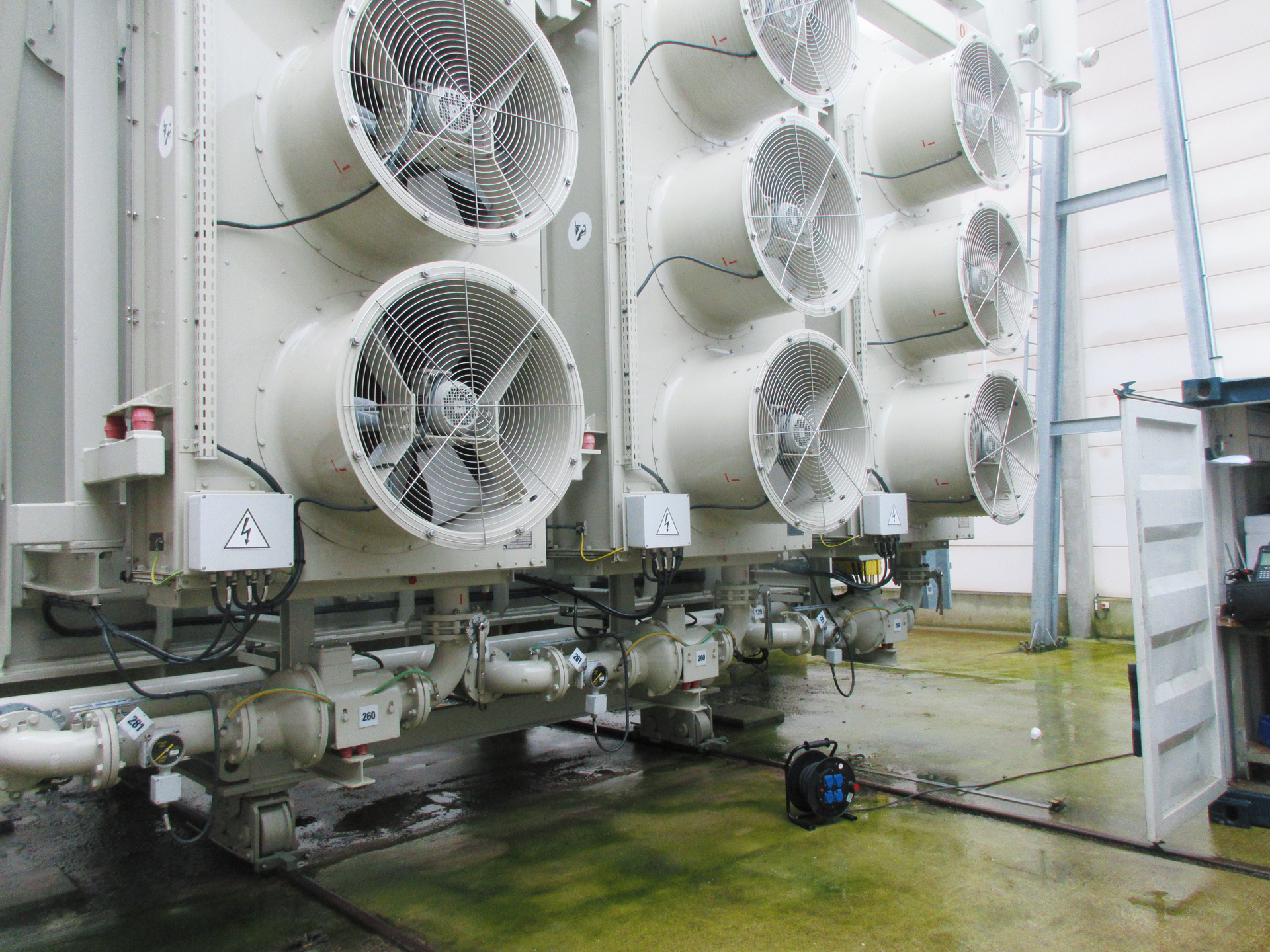
Cooling pumps at the heat exchangers – © Oveducon
Execution
We started off by checking the voltage of all three of the pumps, which turned out to be fine. Then we performed a couple of clamp-on flow measurements to see how the pumps were performing. We noticed a lot of instability in flow at Pump 2.
Because Pump 2 showed problems with the flow, we conducted a few tests:
- partially closing the inlet valve for a few seconds and noticed that the flow was jumping from 1 l/s to 9 l/s
- partially closing the inlet valve from Pump 1 and Pump 3 for a few seconds and noticed that the flow on Pump 2 was jumping from 5 l/s to 11.1 l/s and remained there for a few minutes (the valves from Pump 1 and Pump 3 open). Slowly the flow went back from 11.1 l/s back to 5 l/s.
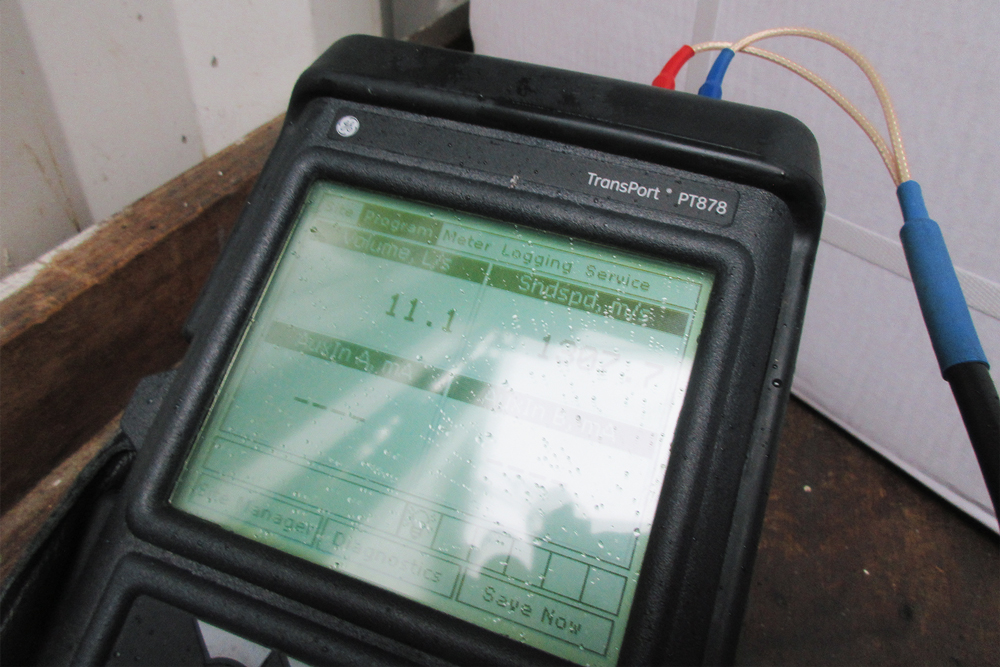
Flow measurement of the pumps – © Oveducon
The flow was not stable over all the three heat exchangers. With this information, we discovered that new gaskets were installed recently and that they did not have the correct fitted design.
“Leakage into the wrong direction occured…”
The original gaskets were for a large part dissolved. The gaskets fitted a few months before, were made at the site with a suitable material, however they were not made in the same shape as the original gaskets. Without the proper sealing of the separation plate, leakage into the wrong direction occurred.
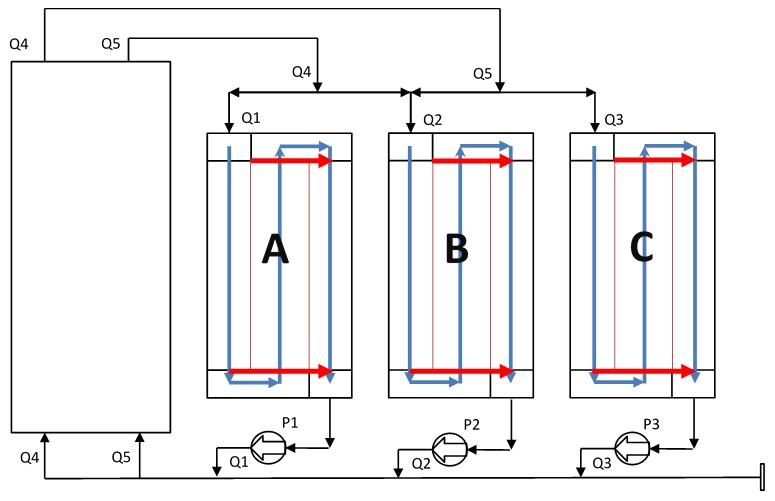
Heat exchanger flow – © Oveducon
The leaking path (red arrow) in heat exchanger A and heat exchanger C appears to be bigger than the leaking path in heat exchanger B. For this reason, we see that the flowrate is very unstable in heat exchanger B. Because of this unstable flow we were not able to get a good flow measurement.
The mid-stream in the heat exchangers were getting a reduced flow rate, where the outer channels were getting an increased flowrate. This probably negatively affected the functionality of the cooling.
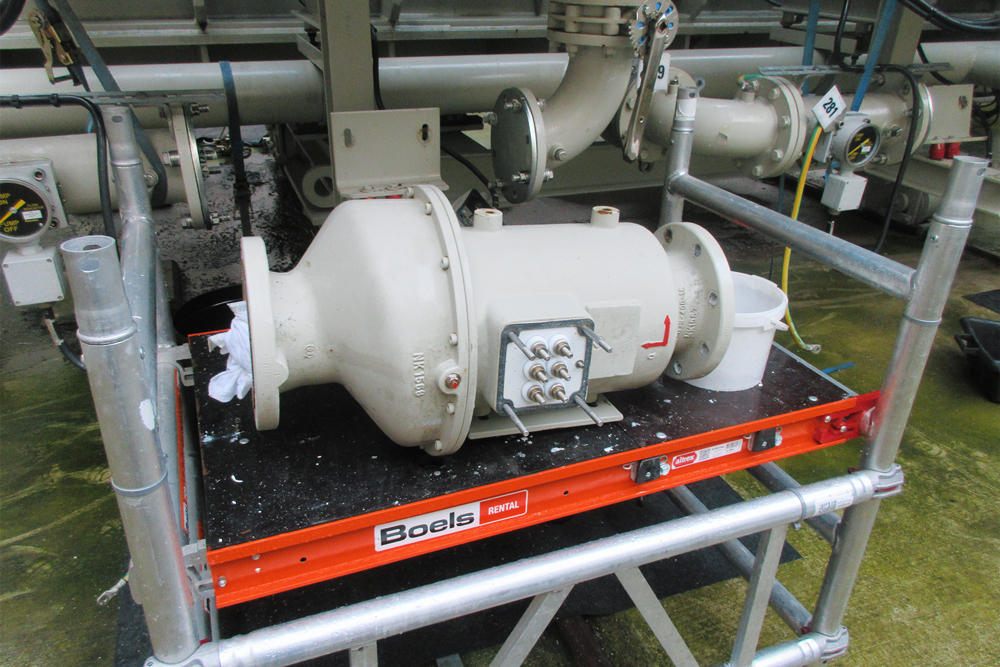
Inspection of the pumps – © Oveducon
More like this
in your mailbox
We continued by examining the pumps. Pump 1 turned out to be in perfect condition, but we found some damage on the rotors of Pump 2 & 3. This damage would cause the rotor to vibrate which in effect could damage the stator. Both the impellers of these two pumps showed very early signs of cavitation.
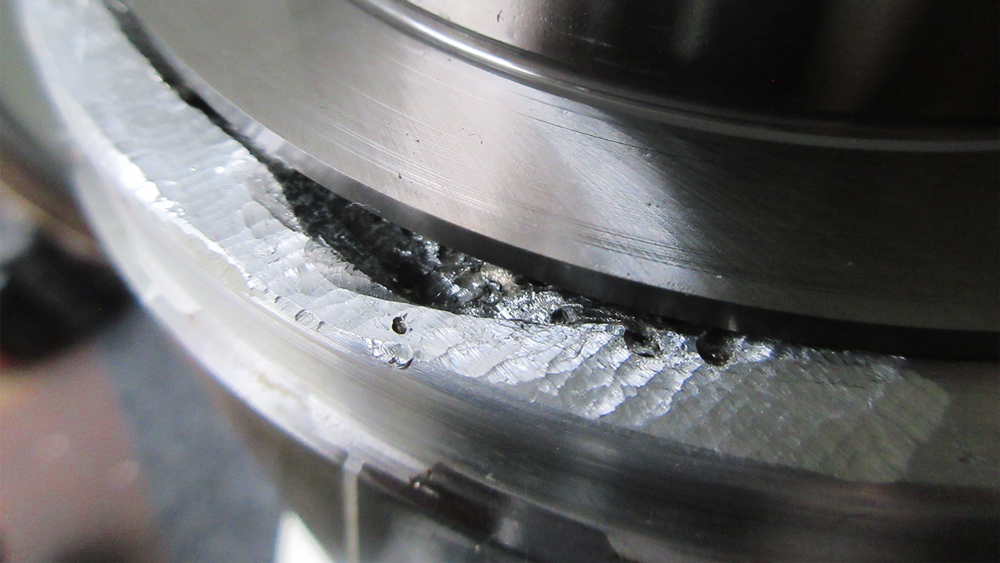
Damage on the rotor – © Oveducon
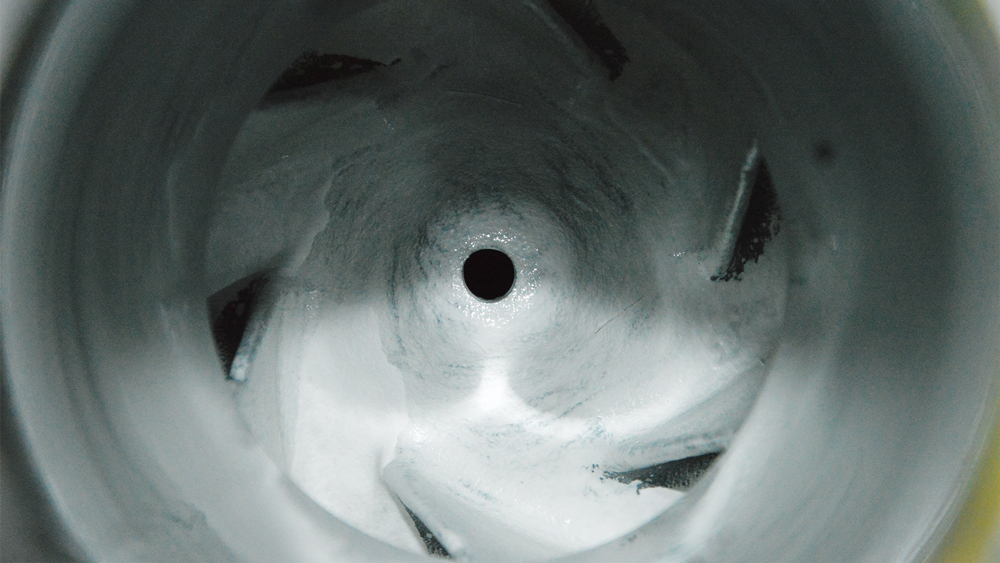
Signs of cavitation on the impeller – © Oveducon
We discovered that the damage on the stator was most likely caused by incorrect assembly of the seal. There were clear marks of grinding on the surface surrounding the cavitation damage. The material possibly got softer due to the heating of the grinding. Soft metal can be damaged very easy when cavitation occurs.
The cavitation damage on the impellers was not an issue, it was too small to have any effect to the functioning of the pump. The cavitation damage was not caused by the wrong gaskets in the heat exchangers, but by failure of the gasket in Pump 1 and Pump 3 prior to failure in Pump 2.
Results
We advised to install new gaskets and balance the rotors of pump 2 & 3 in order to avoid future problems with the stator. After these measures were taken, all pumps went back to their normal behavior.
Learn more
Our mission:
On a mission to help pump industry professionals raise the bar.
There is a huge waste of money, energy, time and resources in the pump industry due to a serious lack of technical know-how.
We are a group of passionate pump experts here to make a difference by sharing our decades of experience.
Our mission:
On a mission to help pump industry professionals raise the bar.
There is a huge waste of money, energy, time and resources in the pump industry due to a serious lack of technical know-how.
We are a group of passionate pump experts here to make a difference by sharing our decades of experience.
Follow
Help
Connect
